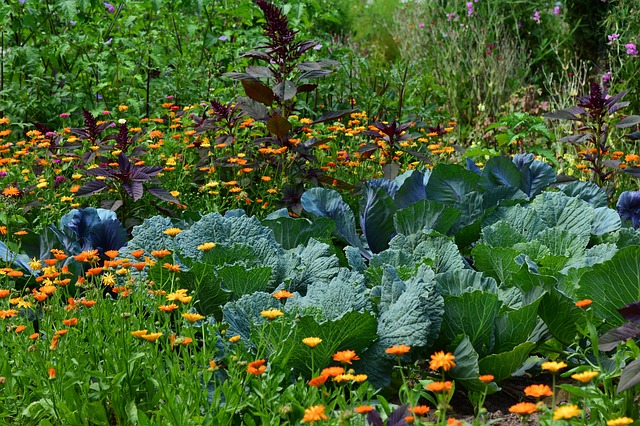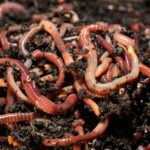Sweet Chestnut and Sustainable Gardening
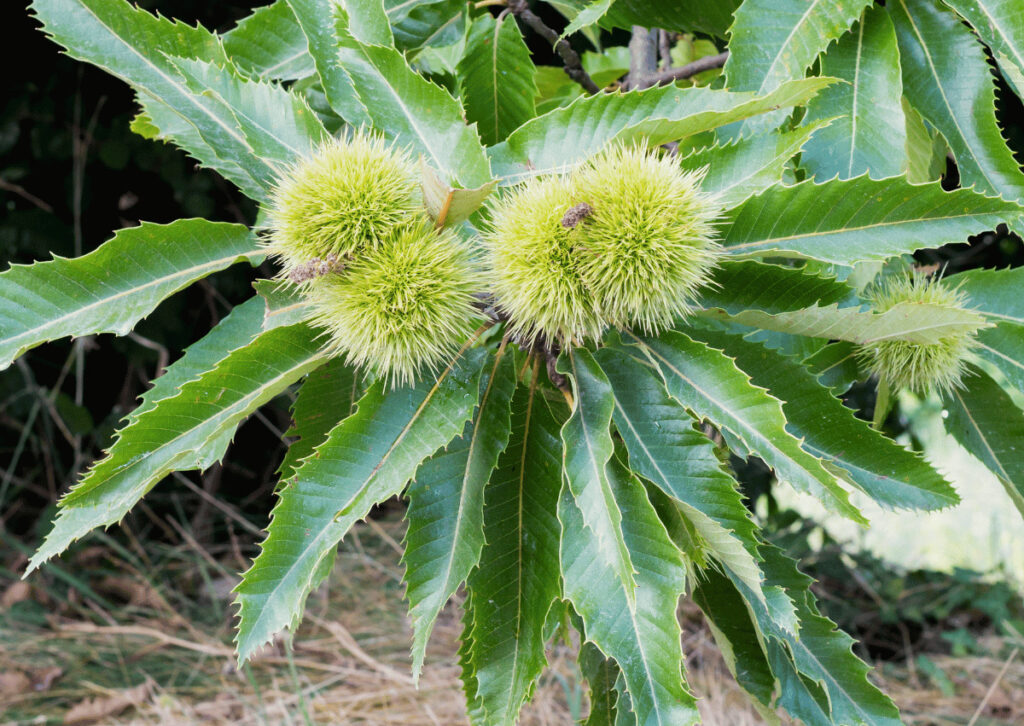
In the world of sustainable agriculture and gardening, the Sweet Chestnut tree holds a special place. Known for its rich, flavorful nuts and towering stature, this remarkable tree offers more than just visual appeal. It’s a powerhouse of benefits, from providing nutritious food to supporting local ecosystems, making it a valuable addition to any garden or small-scale farm.
In this comprehensive guide, we’ll explore the many facets of the Sweet Chestnut tree. We’ll delve into its history, its ecological and economic benefits, and its role in permaculture and hugelkultur practices. We’ll also provide practical advice on how to cultivate Sweet Chestnut in USDA Zone 7 and Scandinavian climates, and how to harvest and use the nuts.
Whether you’re a homeowner looking to enhance your property, a small-scale farmer seeking sustainable crops, or simply a nature enthusiast, this guide will offer valuable insights into the world of Sweet Chestnut. So, let’s embark on this journey and discover why the Sweet Chestnut is indeed a treasure trove for sustainable living.
The Sweet Chestnut: An Overview
A Glimpse into the Sweet Chestnut Tree
The Sweet Chestnut, scientifically known as Castanea sativa, is a deciduous tree native to Southern Europe and Asia Minor. It’s a member of the Fagaceae family, which also includes oaks and beeches. The tree is renowned for its majestic appearance, often reaching heights of 20-35 meters (65-115 feet) and sometimes even more.
The Sweet Chestnut tree is easily recognizable by its long, glossy, and serrated leaves. In summer, the tree blooms with long, yellow catkins, which later give way to its famous chestnuts. These nuts are encased in a spiky green husk, which splits open as the nuts ripen in the fall.
The tree’s bark is another distinctive feature. It’s thick and grey-brown, with deep fissures that form a pattern reminiscent of a twisted rope or spiral. This unique characteristic has earned it the nickname “twisted tree.”
The Historical and Cultural Significance of the Sweet Chestnut
The Sweet Chestnut has a rich history that dates back thousands of years. In ancient Greece, the tree was considered sacred to Zeus, and its nuts were used in the famous Olympic games. The Romans, too, valued the Sweet Chestnut for its nutritious nuts, and they played a significant role in spreading the tree across their empire.
In many cultures, the Sweet Chestnut has been a symbol of longevity and strength. Its wood is durable and resistant to rot, making it a valuable resource for construction. The nuts, too, have been a staple food in many regions, especially in mountainous areas where other crops are difficult to grow.
Today, the Sweet Chestnut continues to be cherished for its beauty, its delicious nuts, and its ecological benefits. It’s a testament to the resilience and bounty of nature, and a wonderful addition to any garden or farm.
The Hundred Horse Chestnut: A Testament to Longevity
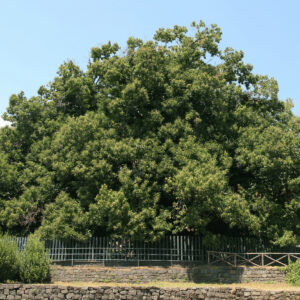
One of the most remarkable Sweet Chestnut trees in the world is the Hundred Horse Chestnut, located on the eastern slope of Mount Etna in Sicily. This tree is not only the largest and oldest known chestnut tree in the world, but it also holds a captivating story.
The Hundred Horse Chestnut, named after a legend in which a queen of Aragon and her company of 100 knights took shelter under the tree during a severe thunderstorm, is believed to be between 2,000 to 4,000 years old. This makes it potentially one of the oldest trees in Europe. The tree’s enormous size is equally impressive. It had a circumference of 57.9 meters (190 feet) when measured in 1780, earning it a place in the Guinness World Records for the “Greatest Tree Girth Ever”.
This ancient tree stands as a testament to the longevity and resilience of the Sweet Chestnut, and it continues to thrive, providing shelter and sustenance, just as it has done for centuries. You can read more about the Hundred Horse Chestnut here.
Benefits of Growing Sweet Chestnut
Growing Sweet Chestnut trees in your garden or on your small-scale farm offers a multitude of benefits. From their nutritional value to their ecological and economic benefits, these trees are a true treasure trove. Let’s delve into these benefits in more detail.
Nutritional Value and Uses of Sweet Chestnut
Sweet Chestnuts are not just delicious; they are also packed with essential nutrients. Unlike other nuts and seeds, they are low in fat and high in carbohydrates, making them a great source of energy. They are rich in dietary fiber, which aids in digestion and helps maintain a healthy weight. Sweet Chestnuts also contain significant amounts of vitamins and minerals, including vitamin C, potassium, and magnesium.
The culinary uses of Sweet Chestnuts are diverse. They can be roasted, boiled, or pureed, and used in a variety of dishes, from soups and salads to desserts. Their sweet, nutty flavor is a delight to the palate and adds a unique touch to any dish.
Ecological Benefits: Supporting Local Ecosystems and Pollinators
Sweet Chestnut trees play a crucial role in supporting local ecosystems. Their flowers provide nectar and pollen for a variety of pollinators, including bees and butterflies. This not only helps in the pollination of other plants but also supports the biodiversity of the area.
The trees also provide habitat for various birds and small mammals. Their thick bark and dense canopy offer shelter, while their fallen leaves contribute to the nutrient cycle, enriching the soil.
Economic Benefits for Homeowners and Small-Scale Farmers
For homeowners and small-scale farmers, Sweet Chestnut trees can be a profitable investment. The nuts can be sold fresh or processed into various products, such as flour, paste, or even gluten-free beer. The wood, known for its durability and resistance to rot, is valuable for construction and furniture-making.
Moreover, Sweet Chestnut trees are relatively low-maintenance. They are resistant to most pests and diseases, and once established, they can thrive for many years with minimal care.
This makes them a cost-effective choice for those looking to diversify their income sources.
Shade Provision: More Than Just a Cool Spot
One of the often-overlooked benefits of Sweet Chestnut trees is the shade they provide. A mature Sweet Chestnut tree has a large, spreading canopy that can significantly reduce the temperature underneath. This can create a comfortable, cool spot in your garden during the hot summer months.
But the benefits of shade go beyond just cooling effects. The shade from Sweet Chestnut trees can help retain soil moisture, reducing the need for frequent watering. It can also protect other plants from the harsh midday sun, allowing you to grow a wider variety of species.
Furthermore, the shade can create a unique microhabitat, attracting a variety of insects, birds, and other wildlife. This can contribute to the biodiversity of your garden or farm, making it a more vibrant and dynamic place.
Cultivating Sweet Chestnut in USDA Zone 7 and Scandinavian Climates
Growing Sweet Chestnut trees can be a rewarding experience, especially when you see them flourish in your garden or farm. However, to ensure their healthy growth, it’s crucial to understand their ideal growing conditions and the steps involved in their planting and care. Let’s explore these aspects in detail.
Ideal Growing Conditions for Sweet Chestnut
Sweet Chestnut trees prefer a well-drained soil and a sunny location. They can tolerate a wide range of soil types, including sandy, loamy, and clay soils, as long as the drainage is good. The soil pH should ideally be acidic to neutral, but Sweet Chestnut trees can also tolerate slightly alkaline conditions.
In terms of climate, Sweet Chestnut trees are hardy and can withstand cold winters. They are suitable for USDA Zone 7 and similar climates, including many regions in Scandinavia. However, they do need a warm summer for the nuts to ripen properly.
Planting and Caring for Sweet Chestnut Trees
- Choosing the Right Location: Select a sunny spot with well-drained soil. Ensure there’s enough space for the tree to grow, as mature Sweet Chestnut trees can be quite large.
- Planting the Tree: Dig a hole twice as wide and as deep as the root ball of your tree. Place the tree in the hole, making sure that the top of the root ball is level with the ground surface. Backfill the hole with soil, firming it gently around the base of the tree.
- Watering: Water the tree thoroughly after planting, and continue to water regularly during dry periods. However, avoid overwatering, as this can lead to root rot.
- Mulching: Apply a layer of organic mulch around the base of the tree. This will help retain soil moisture and suppress weeds.
- Pruning: Prune the tree in late winter or early spring, removing any dead, diseased, or crossing branches. This will help maintain the tree’s shape and promote healthy growth.
Tips for Managing Pests and Diseases
While Sweet Chestnut trees are generally hardy, they can be susceptible to certain pests and diseases. Regular monitoring and early intervention can help keep these issues at bay. It’s important to keep an eye out for signs of pests such as gall wasps, weevils, and moths, as well as diseases like ink disease and chestnut blight.
For a more comprehensive understanding of these pests and diseases, as well as detailed management strategies, we highly recommend checking out our detailed plant profile on Sweet Chestnuts. This resource provides in-depth information and practical tips to help you keep your Sweet Chestnut trees healthy and thriving. You can access the plant profile [here].
Remember, a healthy tree is a productive tree. By understanding potential threats and how to manage them, you can ensure your Sweet Chestnut trees remain a valuable part of your garden for years to come.
Sweet Chestnut in Permaculture and Hugelkultur
Sweet Chestnut trees are not only valuable for their nuts and timber, but they also play a significant role in permaculture design and hugelkultur practices. These sustainable agriculture methods aim to work with nature, rather than against it, creating productive and resilient systems that benefit both people and the environment.
Role of Sweet Chestnut in Permaculture Design and Food Forest Gardening
In permaculture design, every element should serve multiple functions, and Sweet Chestnut trees are a perfect example of this principle. They provide food and timber, improve soil fertility, offer habitat for wildlife, and create a pleasant shade, among other benefits.
Sweet Chestnut trees are also a great choice for food forest gardening, a permaculture practice that mimics natural forest ecosystems to create a productive and low-maintenance system. In a food forest, Sweet Chestnut trees can serve as canopy trees, providing shade and structure for the lower layers.
The nuts of Sweet Chestnut trees can be a valuable food source in a permaculture system. They can be harvested in the fall and stored for winter, providing a reliable source of calories and nutrients. The leaves and twigs, which fall to the ground and decompose, contribute to the nutrient cycle, enriching the soil and benefiting other plants in the system.
Benefits of Sweet Chestnut in Hugelkultur Practices
Hugelkultur is a method of composting large pieces of wood to improve soil fertility and water retention. It involves building a mound of wood and other organic materials, which slowly decompose over time, releasing nutrients into the soil.
Sweet Chestnut trees can be a valuable resource for hugelkultur. When a tree is pruned or cut down, the branches and logs can be used to build a hugelkultur mound. The wood of Sweet Chestnut is relatively resistant to decay, which means it will decompose slowly, providing a long-term source of nutrients.
Moreover, the leaves of Sweet Chestnut trees, which are rich in nutrients, can be added to the hugelkultur mound or used as a mulch. This can help improve soil fertility and moisture retention, benefiting the plants grown on or around the mound.
Sweet Chestnut trees are a versatile and valuable element in permaculture and hugelkultur practices. They contribute to the productivity and resilience of these systems, while also providing a range of ecological benefits.
Harvesting and Using Sweet Chestnuts
Harvesting Sweet Chestnuts
Harvesting sweet chestnuts is a rewarding process that requires a bit of knowledge and timing. The chestnuts are typically ready for harvest in the fall, usually from late September to early November, depending on the climate and weather conditions. Here’s a step-by-step guide to harvesting sweet chestnuts:
- Timing is Key: The best time to harvest sweet chestnuts is when they naturally fall from the tree. This usually happens after the first frost in the fall. The frost helps to split the spiny husks and makes it easier for the chestnuts to fall out.
- Safety First: Chestnuts are encased in a spiny husk, which can be quite sharp. It’s advisable to wear thick gloves when handling them to avoid injury.
- Collect the Chestnuts: Once the chestnuts have fallen, gather them as soon as possible to prevent them from becoming a food source for wildlife. Pick up the chestnuts from the ground and remove the husk if it hasn’t already split open.
- Check for Quality: Look for chestnuts that are firm to the touch. Discard any that are cracked, moldy, or have small holes, as these are signs of worm infestation.
- Curing the Chestnuts: After harvesting, chestnuts need to be cured to develop their sweet flavor. To do this, store them in a cool, dry place for a few days to a couple of weeks. This process also helps to extend their shelf life.
- Storage: Once cured, chestnuts can be stored in the refrigerator for a few weeks or frozen for longer storage. Make sure to keep them in a breathable bag to prevent mold growth.
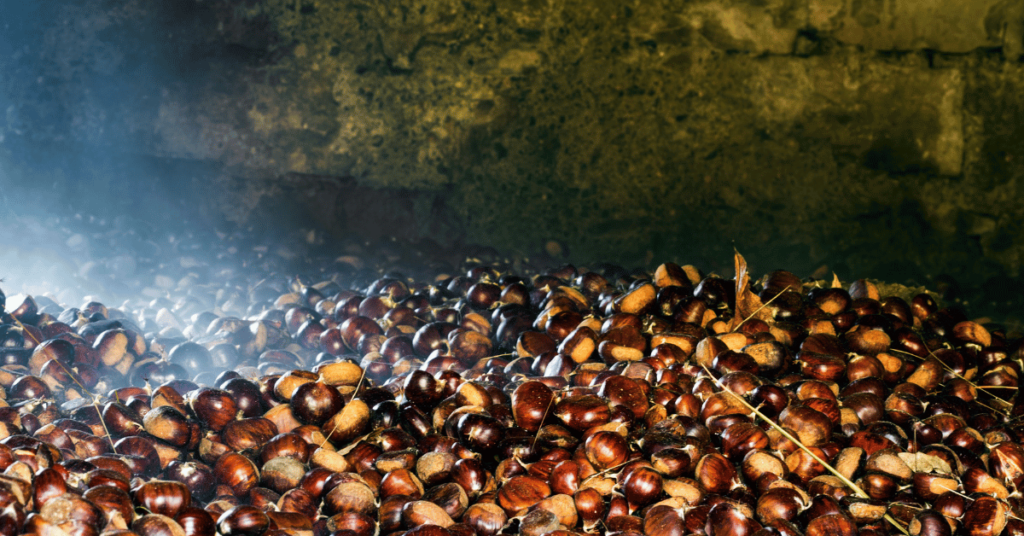
Various Uses of Sweet Chestnuts in Cooking and Other Applications
Sweet chestnuts are a versatile ingredient that can be used in a variety of culinary applications. They are well-known for their high concentration of carbohydrates and low-fat content, making them a nutritious addition to any diet. Here are some ways to use sweet chestnuts:
- Roasting: This is perhaps the most traditional way to enjoy sweet chestnuts. Roasting brings out their natural sweetness and gives them a delightful texture.
- Boiling: Boiled chestnuts can be used in a variety of dishes. They can be mashed and used as a filling for pastries, or added to soups and stews for a hearty touch.
- Baking: Chestnut flour is gluten-free and can be used to make a variety of baked goods, including bread, cakes, and pastries.
- Candying: Candied chestnuts, or marrons glacés, are a sweet treat that originated in France and Italy. They are made by soaking chestnuts in a sugar syrup until they become sweet and glossy.
- Making Chestnut Butter: This is a delicious and nutritious alternative to regular butter. It can be spread on toast or used in baking.
Conclusion
Sweet Chestnut trees are truly a marvel of nature. They not only provide a bountiful harvest of nutritious nuts but also offer a multitude of benefits, from enhancing local ecosystems to offering economic advantages for homeowners and small-scale farmers. Their role in sustainable agricultural practices like permaculture and hugelkultur further underscores their value in promoting ecological balance and resilience.
Growing Sweet Chestnut trees in USDA Zone 7 and similar Scandinavian climates can be a rewarding endeavor, provided their specific growing conditions are met. With proper care and attention, these trees can thrive, offering shade, beauty, and a plentiful harvest year after year.
The versatile uses of Sweet Chestnuts, both in culinary applications and other practical uses, make them a valuable resource. Whether roasted on an open fire, used in a variety of dishes, or utilized in crafting furniture, these nuts prove their worth in more ways than one.
In essence, the Sweet Chestnut tree is a testament to the incredible bounty nature offers. By choosing to cultivate these trees, we not only enrich our gardens and plates but also contribute to a more sustainable and resilient world. So, whether you’re a gardening enthusiast, a small-scale farmer, or a sustainability advocate, consider the Sweet Chestnut tree as a worthy addition to your green space.
Explore the World of Food Forest Gardening
If you’ve enjoyed learning about the Sweet Chestnut tree and its role in sustainable gardening, you might be interested in diving deeper into the world of permaculture. We have an article titled “What is a Food Forest Garden?” that provides a comprehensive overview of this fascinating approach to gardening.
Ready to transform your garden into a thriving food forest? Click here to start your journey!

